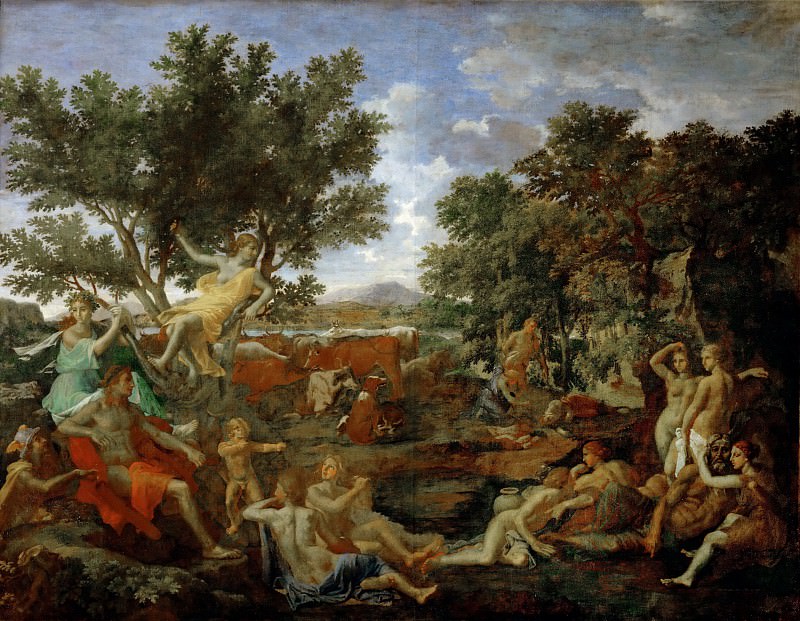Apollo and Daphne Nicolas Poussin (1594-1665)
Nicolas Poussin – Apollo and Daphne
Edit attribution
Image taken from other album: gallerix.org/s/3575090783/N/970672955/
Download full size: 4116×3192 px (4,6 Mb)
Painter: Nicolas Poussin
Location: Louvre (Musée du Louvre), Paris.
Preserved in the Louvre, Apollo and Daphne, never completed, is the last work of painter Nicolas Poussin and can rightly be considered a form of covenant, a reflection of the artist’s personal life. The artist chooses a particular moment in the myth retold by Ovid, where Cupid proves his strength by aiming at Daphne with the first blunted arrow laden with lead. It was reading Ovid as well as other ancient authors that provided Poussin with the material for this final composition.
A description of Nicolas Poussin’s painting Apollo and Daphne
Preserved in the Louvre, Apollo and Daphne, never completed, is the last work of painter Nicolas Poussin and can rightly be considered a form of covenant, a reflection of the artist’s personal life.
The artist chooses a particular moment in the myth retold by Ovid, where Cupid proves his strength by aiming at Daphne with the first blunted arrow laden with lead.
It was reading Ovid as well as other ancient authors that provided Poussin with the material for this final composition. Apollo, the god of fertility and life, sits on the left; he is in love with Daphne, seen in the far right, holding his father, the River Pene, with his arms. This love will fail, for when Apollo wants to reunite with Daphne after a long pursuit, she will turn into a laurel.
The painting plays up Apollo’s argument with Cupid over who is the better archer. Apollo sits and already stares in amazement with love at Daphne, who is in front of him. Between them and him lie naked nymphs at the water’s edge, one of them wringing out her wet hair.
Apollo has just killed Python and is watching what is happening. Daphne is about to be struck by a blunt and heavy arrow that will make her want to flee from the sun god and prevent her from falling in love with him. Apollo, however, hopes to pierce with a thin arrow with a golden tip that will make him the girl’s lover.
Mercury, Apollo’s younger brother, approaches Apollo to steal an arrow from his quiver. And the back one, guarded by two dogs, depicts Apollo’s flock, which will also be stolen by Mercury.
Mercury’s gesture has not only mythological but also astronomical significance. After all, this planet is closest to the sun and constantly steals its rays.
Apollo looks at the nymphs, but does not run after Daphne. Indeed, not being Cupid’s target, he cannot be distracted at this point in the story to the point of not noticing what is happening on his side, and yet Poussin presents it as well.
During the realization of this work, Poussin, having lost his wife to prolonged illness, is already thinking of writing a will, which he will revise shortly before his death. Therefore, the composition lacks the last brushstrokes due to the impotence and trembling hands of the artist before his death. The artist bequeathed the work shortly before his death to Cardinal Camille Massini, realizing that he would not be able to complete it.
Кому понравилось
Пожалуйста, подождите
На эту операцию может потребоваться несколько секунд.
Информация появится в новом окне,
если открытие новых окон не запрещено в настройках вашего браузера.
You need to login
Для работы с коллекциями – пожалуйста, войдите в аккаунт (open in new window).




















You cannot comment Why?